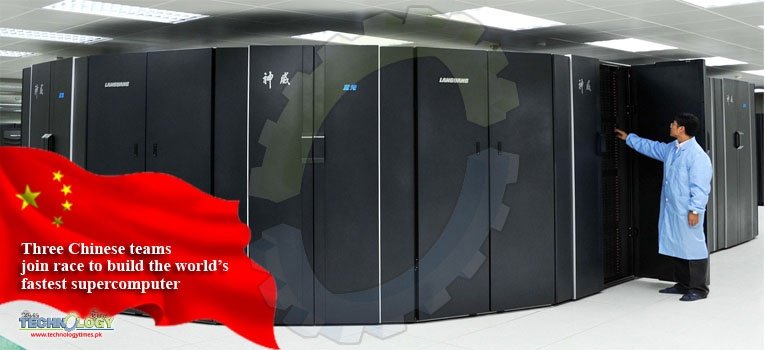Three teams are competing to build China’s machine; the Tianjin prototype has rivals at the National Supercomputing Center in Jinan and at Dawning Information Industry Co., a fastest supercomputer manufacturer in Beijing. The Ministry of Science and Technology (MOST) will probably select two for expansion to exascale by the end of the year.

The approach is a chance to spur innovation, says Bob Sorensen, a high-performance computing analyst at Hyperion Research in St. Paul. It “encourages vendors to experiment with a wide range of designs to distinguish themselves from their competitors,” he says.
In a cavernous room just off the marble floored lobby of China’s National Supercomputer Center of Tianjin stand more than 100 wardrobe-size black and gray metal cabinets, arranged in ranks like a marching army. They contain the Tianhe-1A supercomputer, which 8 years ago became the first Chinese machine to reign, briefly, as the world’s fastest computer, running at 2.57 petaflops (or quadrillion floating point operations per second).
But just upstairs from Tianhe-1A—and off-limits to visitors—is a small prototype machine that, if successfully scaled up, could push China to the top of the rankings again. The goal is a supercomputer capable of 1 exaflop—1000 petaflops, five times faster than the current champion, the Summit supercomputer at Oak Ridge National Laboratory in Tennessee.
China is vying with the United States, Europe, and Japan to plant its flag in this rarefied realm, which will boost climate and weather modeling, human genetics studies, drug development, artificial intelligence, and other scientific uses. But its strategy is unique.
China may not be first to reach this computing milestone. Japan’s Post-K exascale computer could be running in 2020. The United States is aiming to deploy its first exascale system at Argonne National Laboratory in Lemont, Illinois, in 2021. The European Union is ramping up its own program. China is aiming for 2020, but the date may slip.